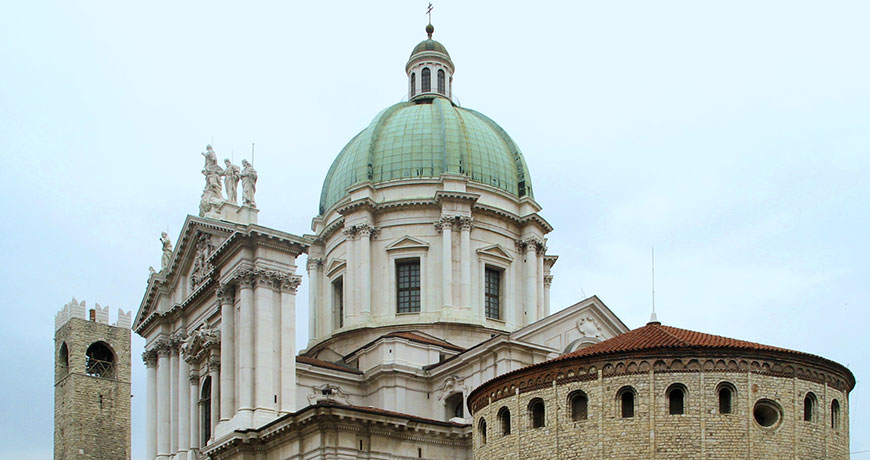Touristic information: Brescia

Brescia takes care of a rich artistic and historical heritage, that lasts from prehistory to nowadays. The first settlement on Cidneo hill was in 1200 b.C. In 89 b.C. was founded Brixia, which in the imperial age became one of the most important cities of Cisalpina. Between 568 and 773 the city was the seat of a Longobardic dukedom. Chosing the Emperor against the clerical city of Bergamo and Cremona, it was often involved in border fights. Against Federico Barbarossa, it took part in the Lombard Legue. As seiniory, Brescia was quarrelled between a lot of Landlords, who ruled it one after the other. In 1426 became part of the Venice Republic under which it remained until the constitution of the Republic of Brescia in 1797, which was a part of Cisalpina Republic. In 1814 Brescia became part of the Lombardo Veneto Reign, but in 1849, during the heroic Ten Days, during which it deserved the name "The Italian Lioness", it rebelled against the Austrians, who left the city only when it became part of the Italian Reign in 1859.
The tour of Brescia should start from the downtown where is placed Piazza della Loggia, a Reinassance jewel, attestation of Venetian domination. There are Palazzo Loggia, Monti di Pietà and the Torretta dell'Orologio. In the medieval Piazza Paolo VI, there are Duomo Vecchio, built in XII century and called Rotonda for its special round structure; Duomo Nuovo, built between 1604 and 1825 and Palazzo Broletto, medieval buildings which were the site of civic bench house during medieval age and then of authorities of Veneto, between XV and XVIII centuries. Piazza del Foro is the heart of the Romanic Brixia: the Capitolino Temple, built between 73 and 74 b. C. from the Emperor Vespasiano, closed the Foro on the northern site. Between IV and V centuries the temple was partly destroyed by a fire and was rediscovered only in 1823. Inside there's a great collection of romanic epigraphes and memorial votive steles, coming from the district of Brescia. The Castle is placed on the Cidneo hill. Its insider walls were built by Visconti, who ruled the city until 1337. There are the square of Torre Mirabella (XIII century) and fourtheenth-century Mastio Visconteo, painted in its innes partes with beautiful frescoes. Inside the Castle there are the Museum of Arms and the Museum of the Risorgimento.
The feast of Saints Faustino and Giovita, the city patron saints, is on the 14th and 15th of February, while the 28th and 29th of May is celebrated Saint Giulia, with craftmen, eno-gastronomic tours and historical commemorations. The Museum Santa Giulia has European cultural importance: it is the site of important exhibitions both for the selection of painters and for its uniqueness. This Museum, with its exhibitions dedicated to great artists like Gauguin, Monet, Van Gogh, has become a point of reference also outside the Italian borders and attracts tourists from all over Europe. Brescia is also characterised by important sports events like Millemiglia race, a historical car racing, born in 1926 by an idea of two young drivers of the Brescia nobility.
